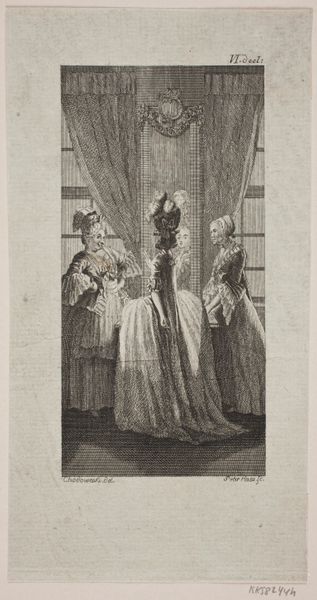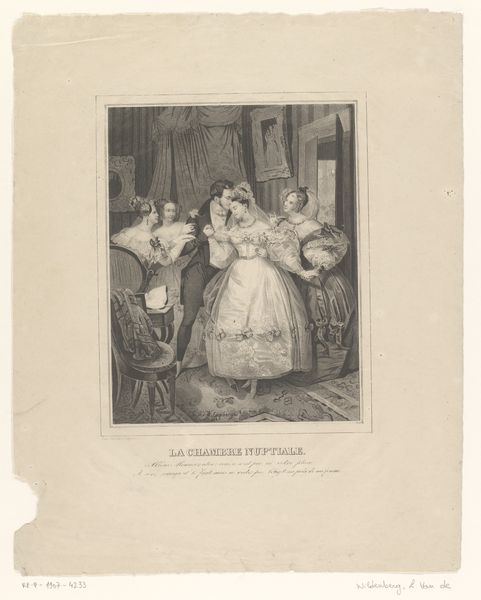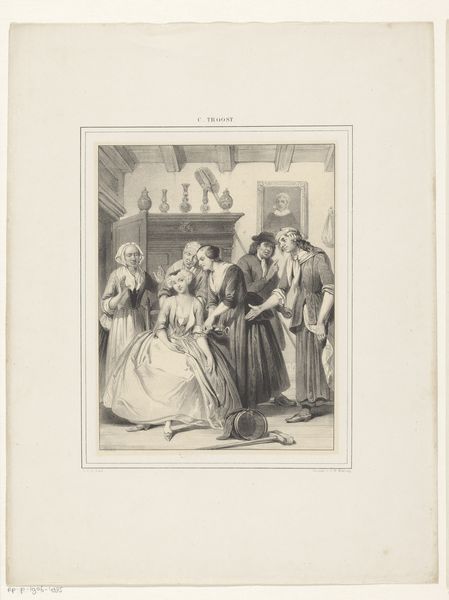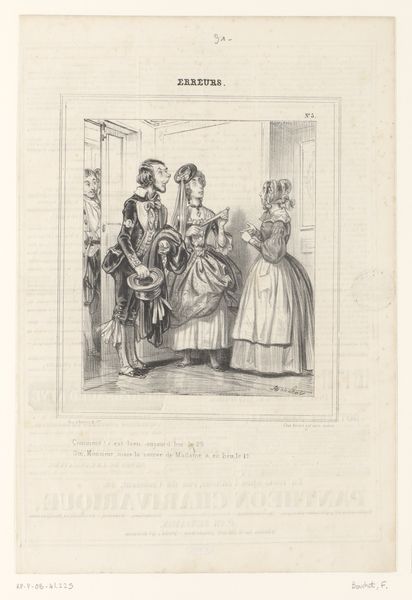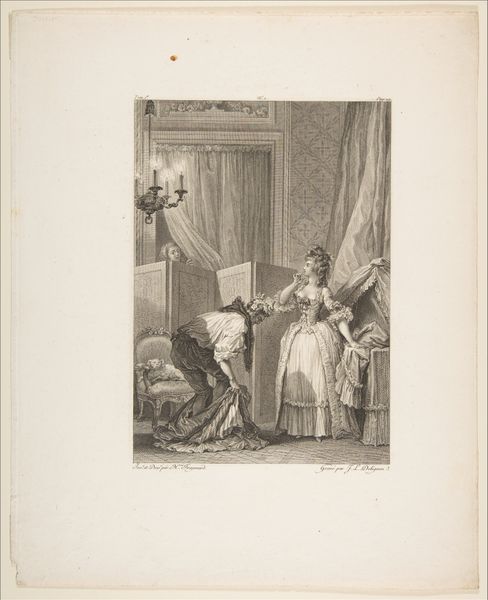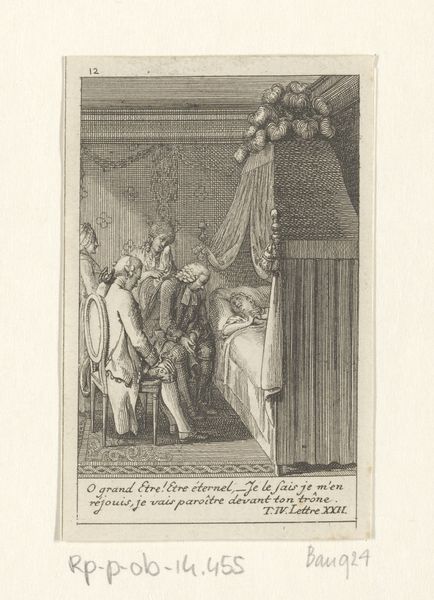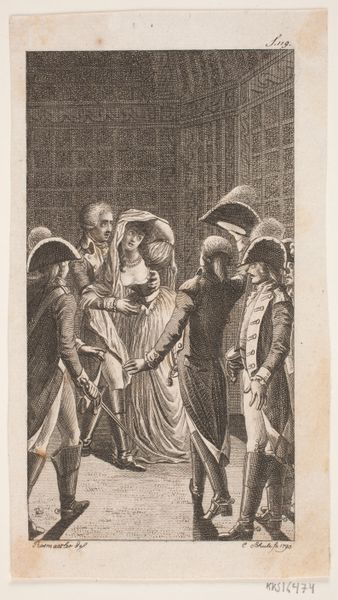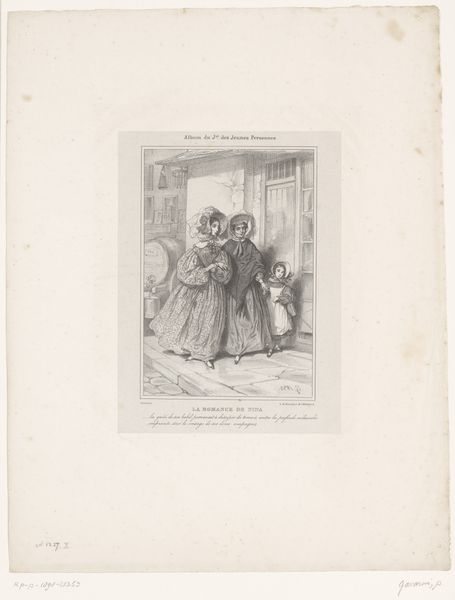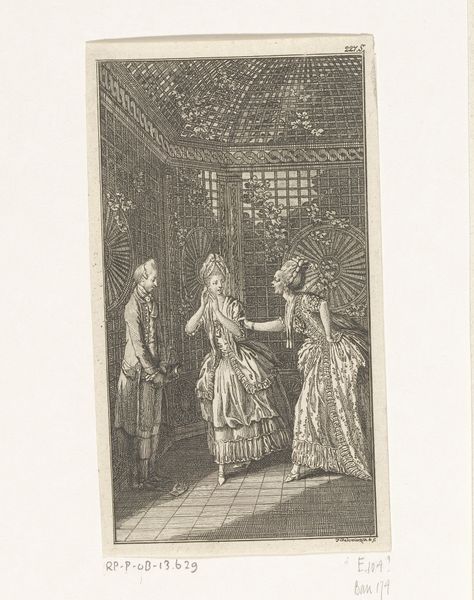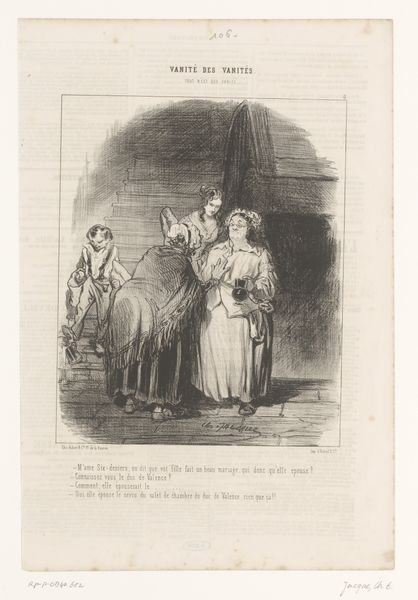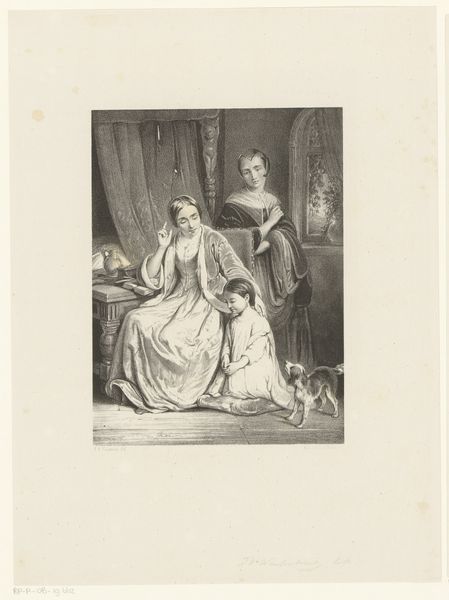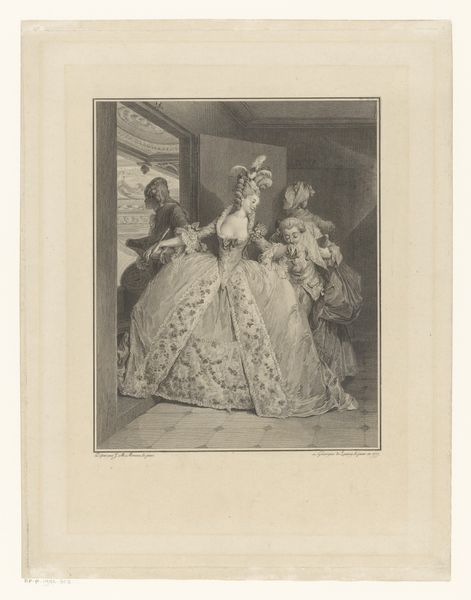
Dimensions: 180 mm (height) x 109 mm (width) (bladmaal)
Editor: Here we have "Vignet til "Sophies Reise fra Memel til Sachsen"" from 1782, an engraving by Peter Haas, currently housed in the SMK. The detailed line work almost creates a tangible texture to the elaborate gowns. What can you tell me about it? Curator: Look closely at those gowns. This engraving gives us access to the material culture of the late 18th century. What materials do you think made up those gowns, and what social and economic forces were at play in their creation? Consider the labor involved, from the cultivation of cotton or silk to the highly skilled work of the seamstresses. Editor: I suppose I hadn’t considered all the work that goes into making a dress like that. Thinking about the cotton, that probably comes from colonial plantations and represents enslaved labor, right? Curator: Precisely! And consider the division of labor even within Europe. Who produced the fabric? Where were these gowns tailored? Think about the system of production that facilitated the creation and consumption of such a garment. Was it local to Copenhagen? Who had access to garments of this style and what message did they convey to the observer? Editor: So this engraving isn't just a pretty picture, it’s actually documenting this whole system of production and consumption? Curator: Indeed. An engraving made multiple copies and shared information regarding clothing styles, but also highlights a form of luxury for a limited set of citizens. What we see on the surface as aesthetic beauty masks underlying power dynamics and economic structures. Look at how this object lets us investigate a pre-industrial supply chain. Editor: That really changes how I see the image! I wouldn’t have considered that, but I'll never look at Baroque art the same way again. Curator: Exactly, by thinking about material and means of production, a new facet of this history presents itself.
Comments
No comments
Be the first to comment and join the conversation on the ultimate creative platform.
